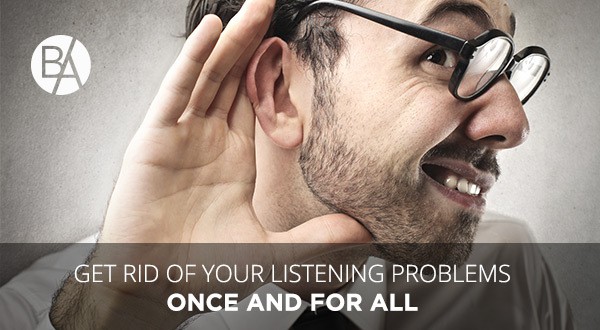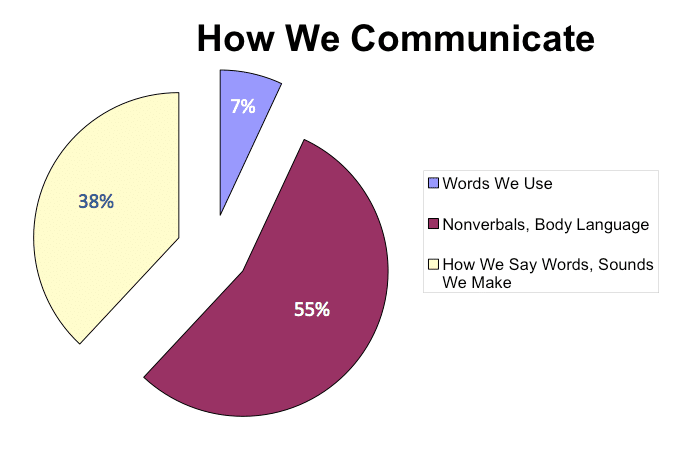When I was young boy, I really enjoyed building model space ships, and sometimes, model cars, boats and ships.
As I think about it, when I take my grandkids to the big toy stores, I don’t see any more of those model kits on the shelves.
I guess toy models are hard to find now days, except maybe at a specialty toy store.
It’s also rare to find model people.
Model Listener
Thinking about model people reminds me of a lady that used to work at our company. She possessed one skill that helped her stand out from virtually everyone around her. In fact, she eventually managed my company’s most profitable division.
What I’m referring to is that she was the best model for listening skills.
Still today, I have never been around anyone who had listening skills equal to her’s.
When we were a small business, I hired her to help with administrative work and to answer the phone.
In those days, we did not have good systems or written procedures. And I had to verbally train her on our business processes.
I was amazed how fast she worked and really caught on without asking any questions.
After about two weeks, she finally asked me a question. I almost fell over because she was such a quiet person, and I forgot what her voice sounded like.
“The one who listens does the most work, not the one who speaks.” – Stephen Covey
Every person can be a model for good listening skills by learning the four ways people listen.
Communications is the foundation for us to build interpersonal relationships and teamwork.
And the best listening skills are modeled by using our eyes and ears as well as our heart and mind.
Model Eyes
Face the one speaking and maintain eye contact.
In the very early years when my sons were little kids, I did not do so well in this area. Often, when they came up to me to ask a question or wanted me to do something with them, I did not take the time to have direct eye contact with them.
I finally learned when they came to me that I would drop what I was doing and turn completely away from what I was doing. This enabled me to fully face and maintain eye contact with them. By doing this, I was “saying” with my eyes that I valued them and was interested in what they wanted to communicate.
I did not realize it then, but I was modeling for them how they could best communicate with their own children.
Pay attention to how words are said and nonverbal clues.
Stephen Covey relays that communication experts estimate that only 7 percent of communication is represented by the words we say, another 38 percent by our sounds and how we say words, and 55 percent by our nonverbal responses and body language.
Beyond the words, people express feelings with their eyes, mouth, and shoulders that reveal enthusiasm, boredom, or irritation.
And you also learn from their voice by their tone and cadence.
Model Ears
Wait and listen until the speaker pauses before you ask a clarifying question.
Rather than interrupt, wait in a principled way to ask, “Do I understand correctly that you said…?”
Listen to when to give regular feedback.
Show the speaker you understand by saying, “That sure is a good idea!” Also, you could nod and show understanding through appropriate facial expressions or an occasional well-timed “uh huh.”
Always restate instructions to ensure you listened and understood correctly. And summarize to ensure accurate follow-through.
Model Heart
Be attentive.
The important thing is to be present, give and pay attention.
Feel what the speaker is feeling.
When the speaker feels sad, joyful, or fearful, try to convey those feeling through your facial expressions and words.
Empathy is the heart and soul of good listening.
Don’t interrupt and impose your solutions.
Children are taught that it’s rude to interrupt.
However, the opposite is being modeled on talk shows and reality programs where people speak loudly and aggressively, and proudly exhibit in-your-face behavior.
They look more like they are in a contest rather than having a conversation.
Interrupting signals that…
- I’m more important than you are.
- What I have to say is more important.
- I don’t really care what you think.
- I don’t have time for your opinion.
Suggestion: Our focus should be on achieving mutual understanding, and not on winning a discussion or debate.
When you are listening to someone talk about a problem, don’t offer a suggesting solution.
Most people what someone to just listen. Not give advice.
And most people prefer and need to discover their own solution. But they need to talk it out.
Tip: Don’t listen with the intent of answering but with the intent of understanding.
Model Mind
Keep an open mind.
Listen without judging the other person or mentally criticizing the things they tell you. Listen without jumping to conclusions.
Do not judge, and you will not be judged. Do not condemn, and you will not be condemned.
Forgive, and you will be forgiven. Luke 6:37 NIV
As soon as you become judgmental, you have compromised your effectiveness as a listener.
Also, don’t try to speed up the conversation by interrupting and finishing the other person’s sentences.
Listen to the words and try to picture what the speaker is saying.
Think only about what the other person is saying. And concentrate on key words and phrases.
And don’t spend the time planning what you want to say next. You can’t rehearse and listen at the same time.
Do you have a model for good listening skills? Who is that person? Would your spouse or close friend say that you have listening problems? Which one of these four model listening skills could you improve upon? Please share your thoughts <here> and share this blog post with someone.


